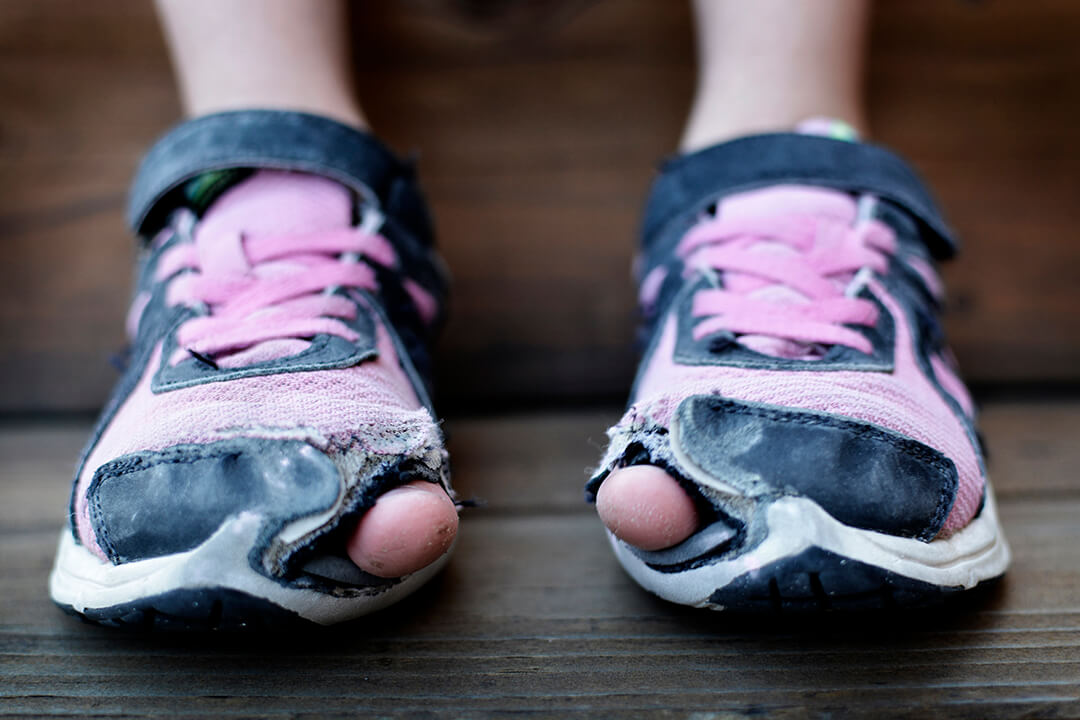Shoes are one of the most essential parts of our daily lives, and a good pair can last us years. Most people, however, keep wearing their shoes until they are falling apart or uncomfortable to wear. While it can be tough to say goodbye to a favourite pair, it is crucial to know when to replace your shoes. Wearing worn-out shoes can cause a host of problems, ranging from increased risk of injury to foot and ankle pain.
Knowing when to replace your shoes can save you a lot of trouble and keep your feet comfortable and healthy. In this blog post, we will go over some signs that it is time to replace your shoes and how to choose the right pair to replace them with.
Signs That It’s Time to Replace Your Shoes
 Worn soles: The soles of your shoes can tell you a lot about the condition of your shoes. If the tread is worn down or there are deep creases in the foam, it is probably time to replace them. This wear and tear indicates that they no longer provide enough cushioning, balance, and support for your feet, which can lead to pain and other injuries.
Worn soles: The soles of your shoes can tell you a lot about the condition of your shoes. If the tread is worn down or there are deep creases in the foam, it is probably time to replace them. This wear and tear indicates that they no longer provide enough cushioning, balance, and support for your feet, which can lead to pain and other injuries.- Stretched-out material: Over time, material can start to stretch out due to regular use and improper fit. This often causes discomfort as well as an increased risk of injury from lack of adequate foot support. When this happens, it is definitely time for new shoes!
- Unpleasant odours: Shoes can start to smell after long-term wear, and the smell may be an indication that the material is breaking down, and potentially housing unwanted fungal growth. If you notice a lingering odor coming from your shoes, it’s probably time to throw them out and get a new pair.
How to Choose the Right Pair of Shoes
- Comfort: When shopping for new shoes, make sure they fit correctly and feel comfortable on your feet. It’s important to try out several different styles and sizes before making a decision. Not every brand and style are the same! You may be a different size in different shoes!
- Support: Make sure the shoes you choose provide adequate support for your feet by considering features such as toe box shape, last shape or cushioning in key areas of the sole. And if you wear custom orthotics, ensure that they will fit well inside the shoes.
- Durability: Consider the material of the shoe and how long it is likely to last, as this can help you determine whether it’s worth investing in a higher-quality pair or if you should opt for something cheaper.
Note that if your feet or legs require compensation to provide balance and stability to your stance and gait, you can have your shoes altered. We provide footwear modification services that
By following these tips, you can ensure that you not only replace shoes before they become a hindrance, but a select good pair of shoes to replace your old ones and keep your feet healthy and comfortable. Remember to pay attention to signs that it is time to replace them, such as worn soles, stretched material, and unpleasant odours. Wearing good, comfortable shoes will help ensure foot health, preventing injuries and discomfort.

